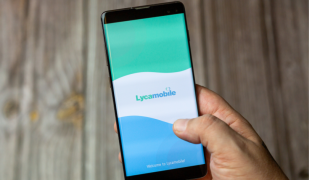Over the last few years, the hype around 5G and predicted adoption has perhaps sometimes brought more confusion than it has clarity. Most consumers are still yet to understand how a 5G network differs to 4G, and we also still find a mixed picture of awareness and understanding of this emerging technology amongst business leaders. Our recent research, commissioned amongst 1,000 UK business leaders found that many are not seeing the link for the role this technology can play in helping them to achieve their commercial goals, and therefore overlooking its transformative potential.
The reason for considering the two audiences in tandem is that the mass availability and adoption of 5G mobile devices among the public will prompt a greater interest for adoption among businesses. It is estimated that nearly two thirds of new phones in 2021 will be 5G-enabled. With this broader adoption and base-level awareness in place, the whole 5G ecosystem will start to mature and build momentum, providing a much stronger base from which to develop real-life, tangible use-cases.
While 2020 has been focused on testing and trials, 2021 will be the year of commercial deployment, as industries from manufacturing to logistics, education and healthcare will grasp the power of low latency and ultra-fast connectivity to revolutionise their operations.
Manufacturing leads the charge
The manufacturing sector, with the promise of industry 4.0, has been particularly active in exploring the potential of adopting 5G through the deployment of private 5G networks. To ensure sufficient coverage and performance, businesses can deploy their own private, dedicated 5G radio networks within their premises, utilising radio spectrum available via shared access licence from Ofcom.
The work being done at the Worcestershire 5G Testbed (W5G) is an excellent example.
Through 5G private networks, wearable devices, IoT, data analytics and mobile edge computing, W5G is giving local businesses – such as Worcester Bosch – the capability to really boost their output and productivity. Significant innovations include the use of autonomous robots to transport products and materials, and the installation of collision detection sensors to ensure health and safety on the factory floor.
Another exciting development, which will be deployed as early as April next year, is the 5G ecosystem being built at Belfast Harbour. The project is focused on exploring how 5G, and other emerging technologies such as AI, IoT and Connected Autonomous Vehicles, can be used together to enhance public safety, physical security, and address climate change across the port and other parts of Belfast City. This is an example of how whole ecosystems can develop with 5G, with innovations such as remote-controlled inspection technology and 5G-enabled sensors – to monitor air quality and other environmental factors – being deployed in the very near-future.
Smart glasses take centre stage across industries
At a more granular level, but still highly relevant to the manufacturing sector, the use of smart glasses will become a lot more prolific as we move into next year. In fact, we can expect to see a range of glasses emerge next year that have 5G connectivity built directly into them, rather than relying on a tethered smart phone connection.
These have the potential to underpin extremely significant use-cases, in the selling or manufacturing of high value products, where life-size virtual demonstrations or prototypes can be brought to life using virtual reality.
In a world where consumers are becoming increasingly demanding of the retail experience, we can also start to see how smart glasses might be adopted commercially. Retailers, for example, may start to use them as part of an experiential and interactive in-store experience, allowing customers to enjoy an immersive tour of a product they are buying.
Healthcare and the rise of telemedicine
Another area to consider, and something that is going to be important on a day-to-day level, is the influence of 5G on the public sector – and particularly healthcare. Looking back at our research, the medical and health services sector is one of the furthest behind on the adoption curve for new technologies. Excluding VOIP, nearly half (48%) of survey respondents said they aren’t using any of the emerging technologies we listed - including 5G - with 38% saying they don’t have a plan to adopt any of them in the next five years.
The healthcare sector is under more pressure than ever, and technology should play a key role in making its work more efficient and effective.
Telemedicine is just one example of where 5G has a key role to play. The Covid-19 pandemic has prompted an extraordinary shift in consumer familiarity with reliance on, and trust in technology as a way to work and communicate remotely. This extends far beyond the headlines linked to soaring e-commerce, to having a profound impact on our comfort with accessing critical and health-related services remotely. Telehealth has been a topic of conversation for some time, but the cultural shift we’ve seen in 2020, coupled with increased uptake of 5G, will prompt a real acceleration of this trend, with the potential to transform healthcare services and deliver significant cost savings by reducing the number of patient trips to hospitals.
Digital transformation has been a buzzword among most businesses for the best part of a decade. However, the current pandemic, coupled with the rapidly shifting landscape of the workplace and the changing nature of customer experience, has paved the way for businesses to really interrogate their workplace operations and internal cultures. As 2021 unfolds, we expect to see more meaningful conversation at board level regarding the integration of digital technology, and the practical and immediate role it can – and must – play in shaping operations and delivering value to employees and customers.





